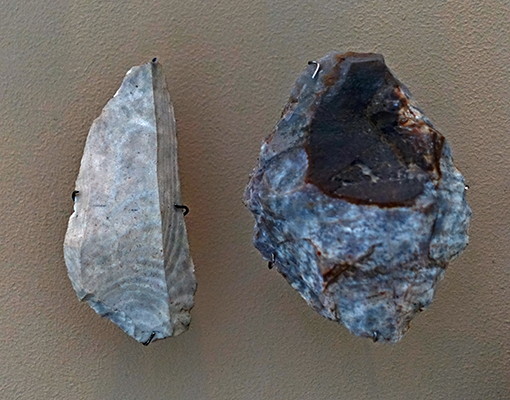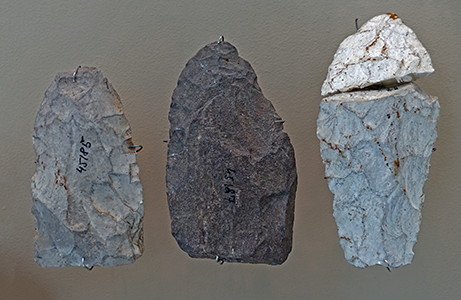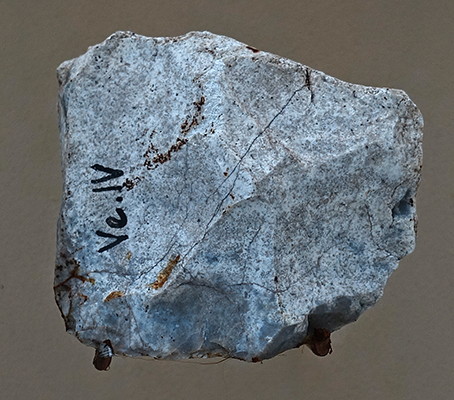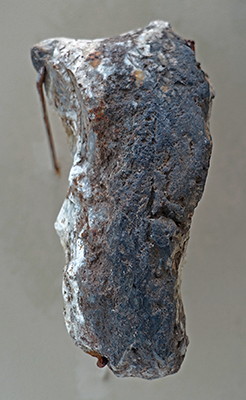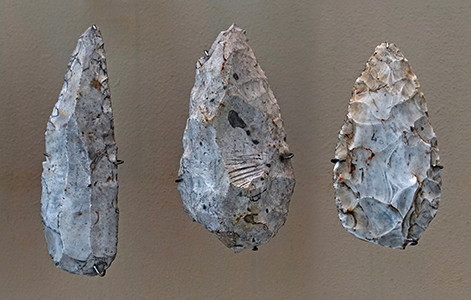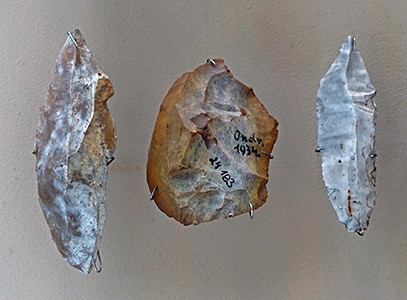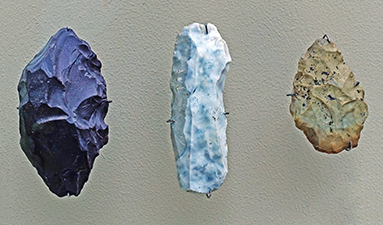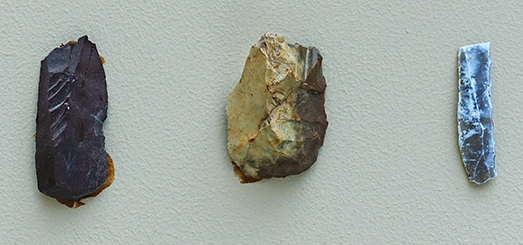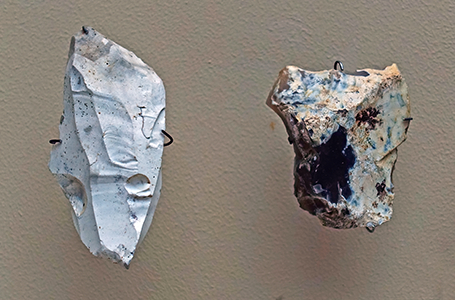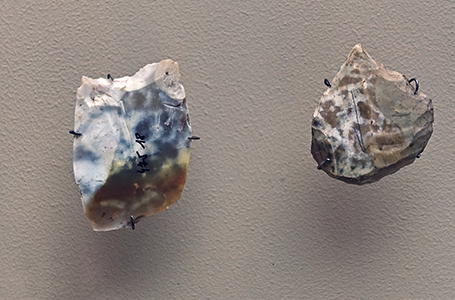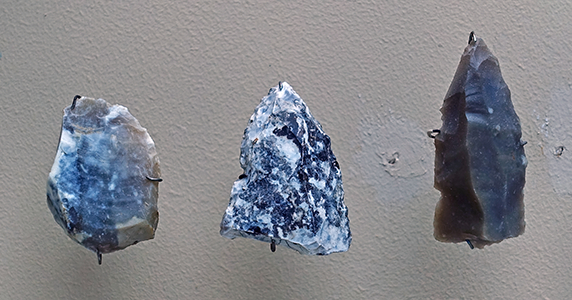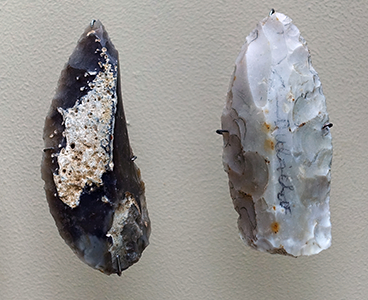Back to Don's Maps
 Mousterian (Neanderthal) Sites
Mousterian (Neanderthal) Sites Back to the review of hominins
Back to the review of hominins
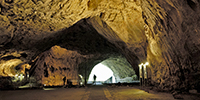 Back to Central European Sites
Back to Central European Sites
Szeletian culture
The Szeletian culture is an outgrowth of the Mousterian, similar to the Châtelperronian, an industry with elements of both the Mousterian and the Aurignacian, and is contemporaneous with the Aurignacian. An archaeological culture of the early Upper Palaeolithic (circa 38 000 BP - 28 000 BP.). The Szeletian culture was widespread in what is now Hungary, Czechoslovakia, and southwestern Poland, and its influence can also be seen at a number of places in Romania and Bulgaria. Named after the Szeleta cave in the Bükk mountain massif in northern Hungary, the Szeletian culture developed mainly from the local Mousterian culture and for a time was contemporaneous with the Aurignacian culture. It was succeeded by the Gravettian cultures. The Szeletian culture is characterized by leaf-shaped, bifacially flaked flint spearheads, Mousterian side-scrapers, and vestiges of the Levalloisian flaking technique.Text above: Adapted from Wikipedia and The Free Dictionary
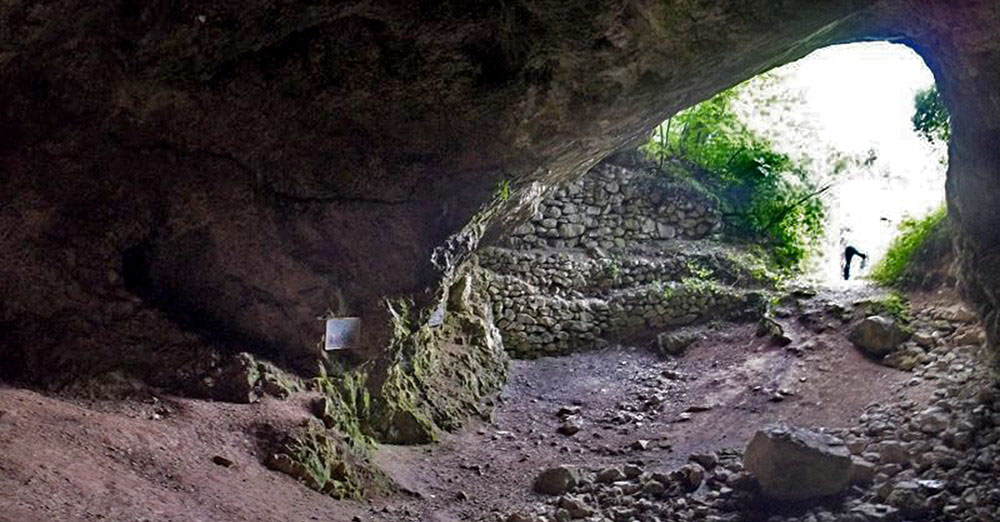
Szeleta Cave
Photo: Czina Tivadar's webpage, transferred from hu.wikipedia by Czina Tivadar. Original uploader was Szenti Tamás at hu.wikipedia
Permission: CC-BY-SA-3.0.
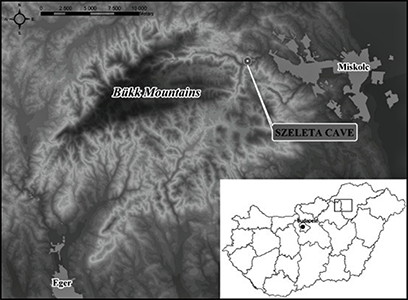
Location of Szeleta Cave.
Photo: Lengyel et al. (2009)
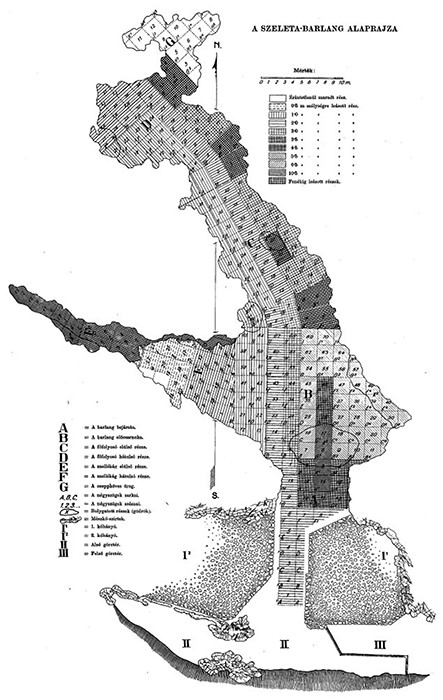
Plan of Szeleta Cave (modified after Kadić 1916)
Photo: Lengyel et al. (2009)
The continuous Szeletian settlement occupied the whole of Moravia, Western Slovakia, the southern parts of Poland, and the northern parts of Hungary. The considerably extensive area of Szeletian sites, sometimes covering up to several square kilometres, suggests repeated returns of groups to their previous settlements, but not to the same spots.
Text above: Anthropos Pavilion/Moravian Museum, Brno, Czech Republic
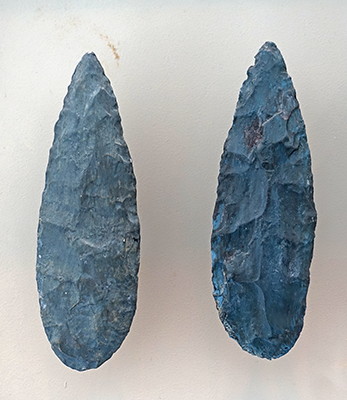
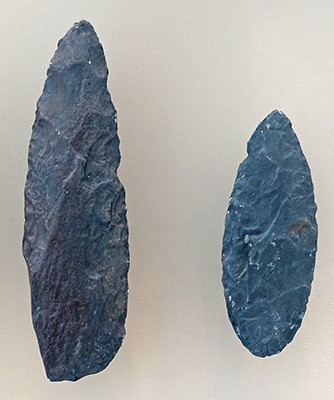
At Szeleta Cave in the Bukových (Bükk, Beech) Mountains, leaf shaped spear heads have been found. In Slovakia, Szeletien locally excludes the Aurignacien, although the Carpathians were alternately visited by hunters of both cultures.
( note that these laurel leaf spear heads are usually indicative of the Solutrean culture, not the Aurignacian - Don )
Photo: Don Hitchcock 2018
Source and text: Facsimile, Anthropos Pavilion/Moravian Museum, Brno, Czech Republic
Jezeřany I
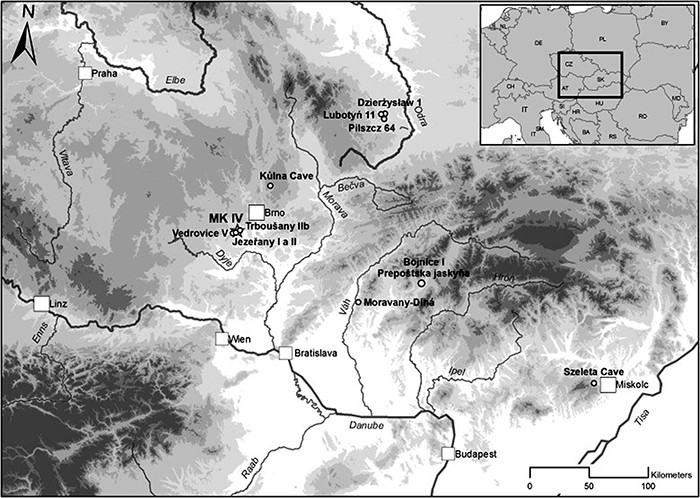
Jezeřany and Szeleta Cave location map.
Photo: Nerudová and Neruda (2017)
Jezeřany I, racloirs, side scrapers.
Stations in the vicinity of Bobravy used flint from Krumlovsky forest, together with rocks from Stránské skály (Levallois technique). The Orechov II station is in excellent contact with the Hungarian Szeletien: Zuherski radiolarite and rhyolite from the Bukovych Mountains were used.
( Stránské skály is a rock formation located in the northernmost part of the Brno-Slatina district of Brno - Don )
Photo: Don Hitchcock 2018
Source and text: Originals, Anthropos Pavilion/Moravian Museum, Brno, Czech Republic
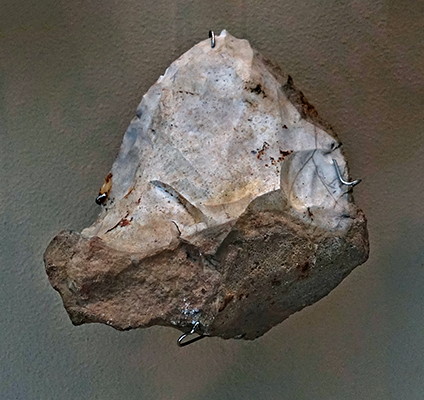
Jezeřany I, racloir, side scraper.
Photo: Don Hitchcock 2018
Source and text: Originals, Anthropos Pavilion/Moravian Museum, Brno, Czech Republic
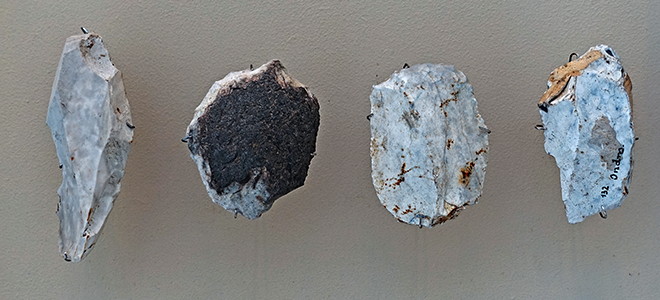
Jezeřany I, racloirs, side scrapers.
Photo: Don Hitchcock 2018
Source and text: Originals, Anthropos Pavilion/Moravian Museum, Brno, Czech Republic
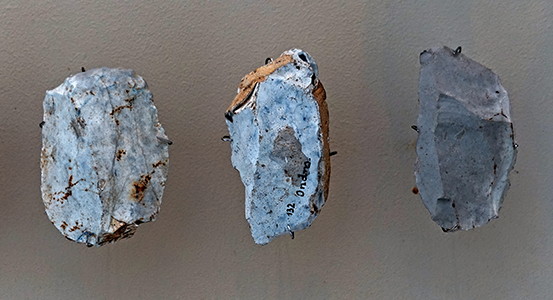
Jezeřany I, racloirs, side scrapers.
Photo: Don Hitchcock 2018
Source and text: Originals, Anthropos Pavilion/Moravian Museum, Brno, Czech Republic
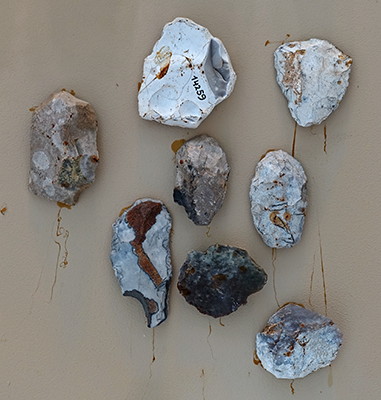
Jezeřany II, scrapers
Photo: Don Hitchcock 2018
Source and text: Originals, Anthropos Pavilion/Moravian Museum, Brno, Czech Republic
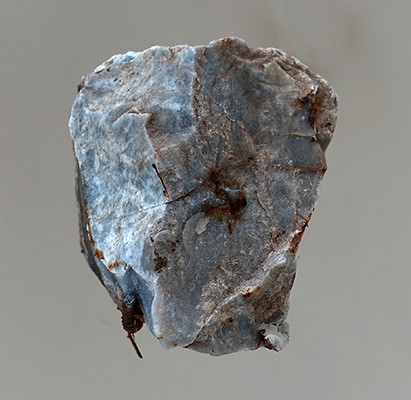
Szeletian Cores from Vedrovice IV, close by Jezeřany I and II.
Photo: Don Hitchcock 2018
Source and text: Original, Anthropos Pavilion/Moravian Museum, Brno, Czech Republic
The Ondratice site cluster and nearby sites
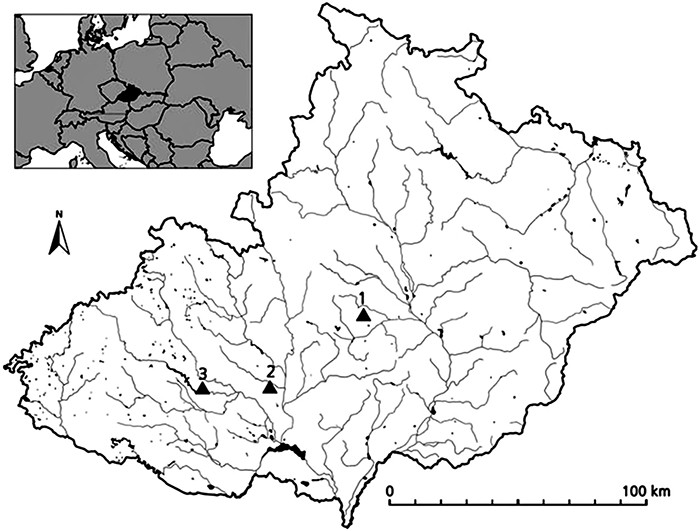
Map of the eastern part of the Czech Republic, the area known as Moravia-Silesia, including Brno. To the west is Bohemia, including Prague.
1 Ondratice site cluster (Želeč, Ondratice, Drysice).
2 Bobrava river valley site cluster (Ořechov, Želešice).
3 Mohelno site cluster (Mohelno).
Map: P. Jansa / O. Mlejnek with use of Grass GIS).
Source and text: Mlejnek and Škrdla (2012)
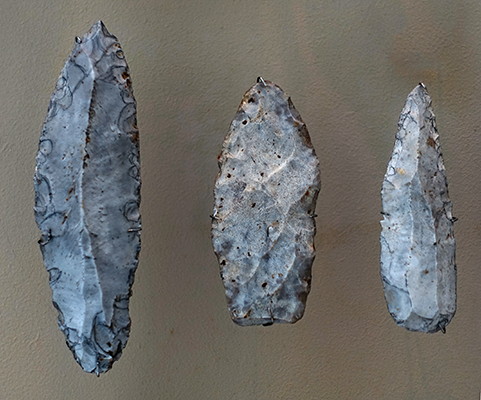
Points.
Significant settlement areas of the Szeletian culture were found at Ondratice, Drysice, Otaslavice and Vinencova.
Judging by the predominance of imported flint, advances in the technology used, and the speculative typological spectrum, it is obvious that they belong to the younger phases of this culture.
At Ondratice I, there are abundant spearpoints with a partial flat retouch.
( The points shown here may be the ones referred to - Don )
The Hungarian radiolarites and rhyolites prove the connections with the territory of Hungary.
Photo: Don Hitchcock 2018
Source and text: Originals, Anthropos Pavilion/Moravian Museum, Brno, Czech Republic
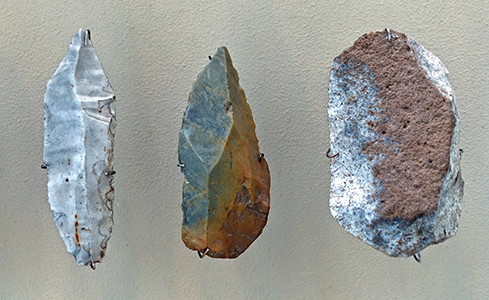
The extent to which quartz is used in the local area is not known, since older stratigraphic observations are contradictory and can not be verified at present.
Photo: Don Hitchcock 2018
Source and text: Originals, Anthropos Pavilion/Moravian Museum, Brno, Czech Republic
Míškovice type
The Míškovice type industry has elements of the Szeletien and Aurignacian, typical for the area east of the Morava River and southeast of the Chřiby massif. Imported flint prevails among raw materials.At a large station on the hill Křemenná near Míškovice there are very colourful raw materials of distant origin, such as Swieciechów silicite from the Świętokrzyskie Mountains in central Poland, obsidian (volcanic glass) from eastern Slovakia, Hungarian radiolarites, central Slovak limnosilicites, etc.
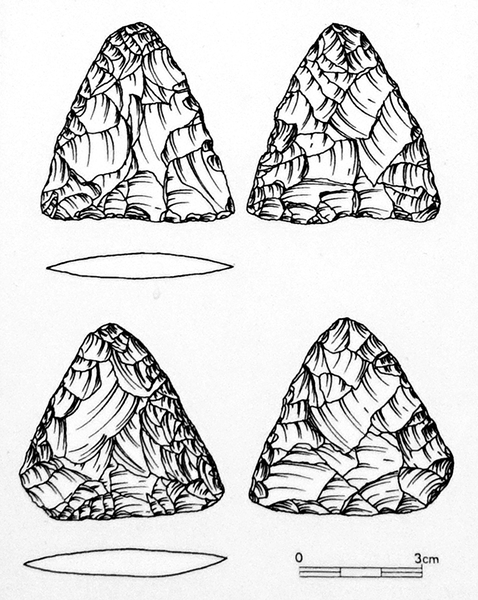
A specialty of the large Lhota u Lipnika (Míkovice type) is triangular leaf points, close to the Eastern European type of Streletskaya-Sungir.
Artist: Unknown
Rephotography: Don Hitchcock 2018
Source and text: Anthropos Pavilion/Moravian Museum, Brno, Czech Republic
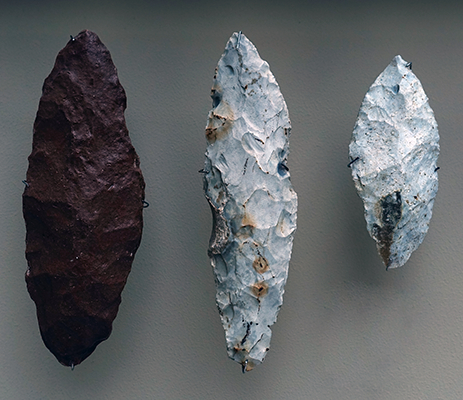
The most typical artefact was leaf shaped points, which due to careful processing, aesthetic shape, and functionality of the weapon became a prestigious article, disseminated beyond the framework of the Szeletien.
Photo: Don Hitchcock 2018
Source and text: Originals, Anthropos Pavilion/Moravian Museum, Brno, Czech Republic
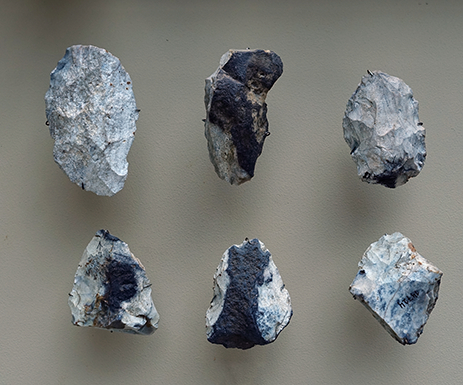
In the Szeletian culture, Mid-Palaeolithic-type tools persist, such as these sidescrapers and hand axes ( klínky ).
Photo: Don Hitchcock 2018
Source and text: Originals, Anthropos Pavilion/Moravian Museum, Brno, Czech Republic
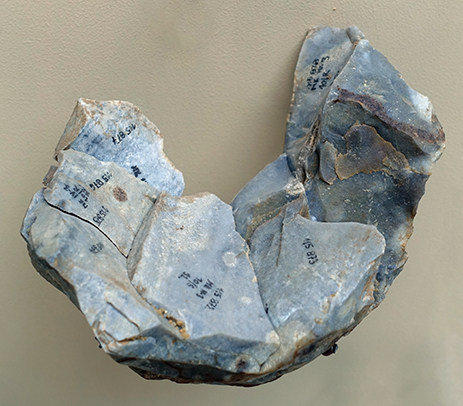
Discoid core puzzle from Moravský Krumlov IV, laboriously fitted together
( These exercises give a valuable insight into the way the tools were made - Don )
Photo: Don Hitchcock 2018
Source and text: Originals, Anthropos Pavilion/Moravian Museum, Brno, Czech Republic
The tools from the large archaeological site on the hill Křemenná (314 m) to the southwest of Míškovice are made of varied, brightly coloured, mostly imported raw materials.
Photo: Don Hitchcock 2018
Source and text: Originals, Anthropos Pavilion/Moravian Museum, Brno, Czech Republic
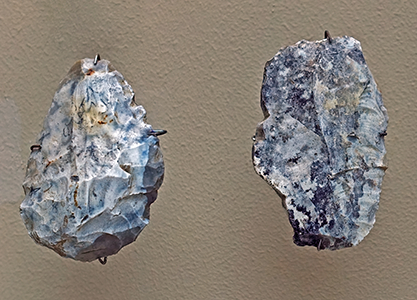
Sites in the vicinity of Dubice in the Hornomoravský úval can be assigned to the Jerzmanowician. It is a cultural group close to the Szeletian, but with a predominance of one-sided leaf points and a larger number of blades. It forms part of a large but very sparse network sites traceable through southern Poland, Germany and Belgium to England.
Photo: Don Hitchcock 2018
Source and text: Originals, Anthropos Pavilion/Moravian Museum, Brno, Czech Republic
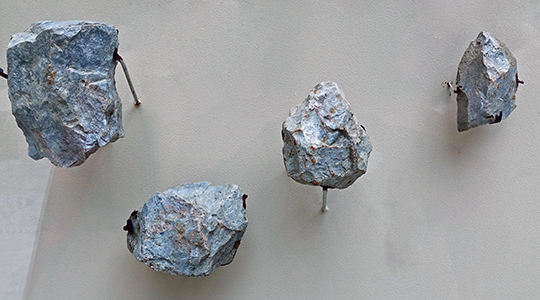
In Pavlovich near Přerov local flint was processed.
Photo: Don Hitchcock 2018
Source and text: Originals, Anthropos Pavilion/Moravian Museum, Brno, Czech Republic
References
- Lengyel, G., Szolyák P., Pacher M., 2009: Szeleta cave earliest occupation reconsidered, Praehistoria, 9 10, 9-20
- Mlejnek O., Škrdla P., 2012: Ondratice I/Želeč – An Early Upper Palaeolithic Site in Central Moravia, Archäologisches Korrespondenzblatt, 42 · 2012 295
- Nerudová Z., Neruda P., 2017: Technology of Moravian Early Szeletian leaf point shaping: A case study of refittings from Moravský Krumlov IV open-air site (Czech Republic), Quaternary International, Volume 428, Part A, 15 January 2017, Pages 91-108
